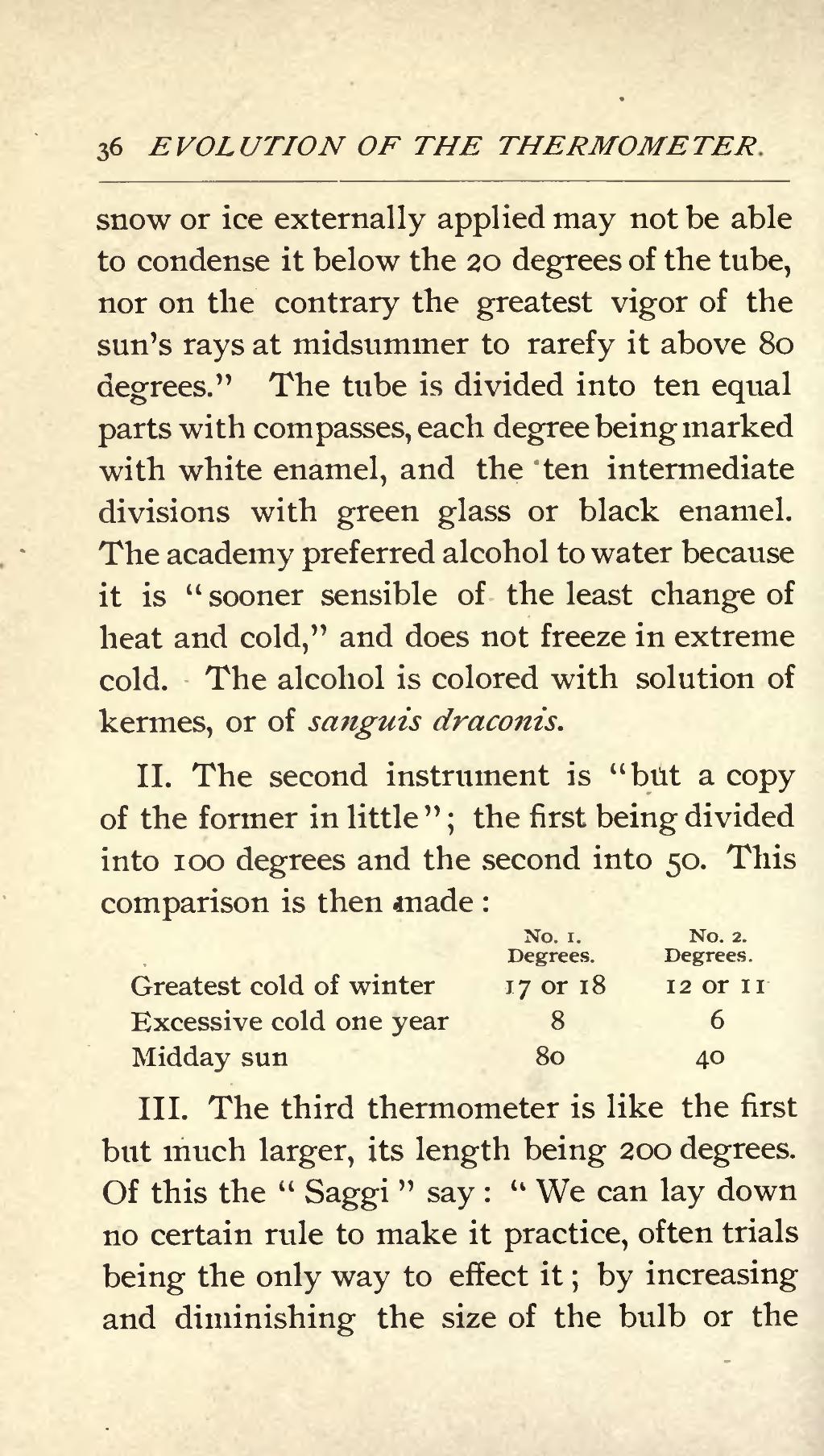snow or ice externally applied may not be able to condense it below the 20 degrees of the tube, nor on the contrary the greatest vigor of the sun's rays at midsummer to rarefy it above 80 degrees." The tube is divided into ten equal parts with compasses, each degree being marked with white enamel, and the ten intermediate divisions with green glass or black enamel. The academy preferred alcohol to water because it is "sooner sensible of the least change of heat and cold," and does not freeze in extreme cold. The alcohol is colored with solution of kermes, or of sanguis draconis.
II. The second instrument is "but a copy of the former in little"; the first being divided into 100 degrees and the second into 50. This comparison is then made:
| No. 1. Degrees. |
No. 2. Degrees. | |
| Greatest cold of winter | 17 or 18 | 12 or 11 |
| Excessive cold one year | 8 | 6 |
| Midday sun | 80 | 40 |
III. The third thermometer is like the first but much larger, its length being 200 degrees. Of this the "Saggi" say: "We can lay down no certain rule to make it practice, often trials being the only way to effect it; by increasing and diminishing the size of the bulb or the
